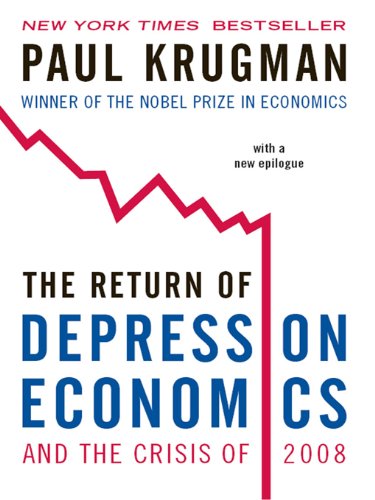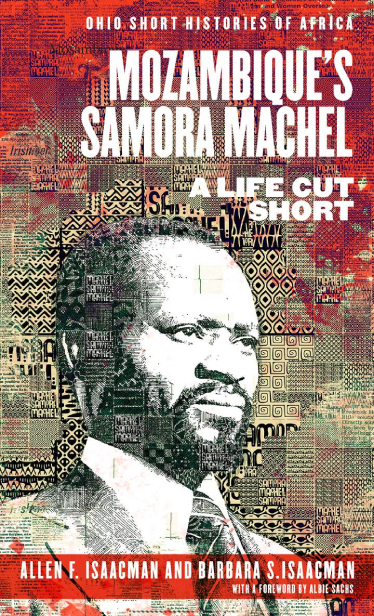A History of Bangladesh, Willem Van Schendel, Cambridge University Press, 2009, pp. 346, ISBN: 978-0-521-67974-9
The story of Bangladesh is often told through the prism of natural disasters, poverty, and underdevelopment. The country’s coastal morphology shapes much of it, with floods, cyclones, storm surges, ruined crops due to increased soil salinity and rural to urban exodus featuring prominently in the news. With 163 million people living in the delta, Bangladesh is often referred to as ground zero for climate change as its impacts are most visibly felt here. It is estimated that hundreds of thousands of internally displaced people settle in Dhaka each year, where they eke out a living working as domestic help, waste pickers or workers in the garment industry. Here, they are also faced with exploitative and hazardous working conditions, as evident in the Rana Plaza tragedy, where a building housing five garment factories collapsed, killing 1132 and injuring over 2500. Before that, 112 workers were burned to death when their factory caught ablaze.
In a much-needed corrective, University of Amsterdam’s Willem Van Schendel has written a bird’s eye overview of the region’s long history stretching from pre-historic time to the present, showing that sorrow and hardship are not innate qualities of the region, but a product of colonial and post-colonial forces that continue to shape the society. Aimed to introduce Bangladesh to the general reader, Van Schendel divides his narrative into four broad categories: ecology, politics, economy, and society. He identifies multiple frontiers that form cleavages that shape the region’s history. The land-water frontier is shaped by the seasonal ebb and flow of great rivers (Padma, Meghna, Jamuna), rain and sea, which inundate the land, destroy and create livelihoods and inform rural settlements. Such a favourable environment for rice cultivation allowed Bangladeshis to develop over a thousand different varieties of it to suit their needs and environment. It also allowed complex urban settlements to grow in the Bengal floodplains, such as Tamluk, Mahasthan and Mainamati, creating a state frontier. Dynasties and great empires rose and were fell by the great power of the delta’s rivers. One region that both geographically and administratively stood out was the higher Chittagong Hill Tracts, where various frontiers coalesce to form a dividing line between that region and the rest of the country.
Van Schendel describes how archeological digs confirmed the coexistence of Buddhism, Hinduism and Jainism, while the penetration of Islam and Christianity from Central Asia and in the heydays of European imperialism interacted with them to produce a unique blend of regional beliefs. Islam became the dominant religion during the Sultanate years that preceded the rule by the Mughal Empire. As Van Schendel details, Islamic identity spread with the state, and those areas out of reach, such as forests or the Chittagong Hill Tracts, remained untouched. Agrarian, religious, state and linguistic frontier interacted to shape the area now known as Bangladesh that contains multiple identities, layered with different historical experiences but all being a part of a unique regional identity.
Bengal delta was at the crossroads of long-distance trade routes, where westward sailing led to India, Sri Lanka and the Mediterranean beyond, and eastward to South-East Asia and China. Port cities mushroomed, foreigners settled and a trading economy controlled by local rulers developed. Bengali silk, jute and rice were exported, while other trinkets trickled in. In the age of colonial expansion, being at a crossroads, Bengal experienced its first colonial encounter with the defeat of the Mughals at Plassey in 1757, which ultimately transformed the administration, economy, and social relations of the delta. The British manipulated the food-grain market to extract maximum value, leading to the Great Famine of 1769 and 1770, when up to a third of the presidency’s population is thought to have perished. They later instituted “the permanent settlement” with the help of the rural gentry, the zamindars. The zamindars were expected to pay a fixed rate of tax to the British by exploiting the labour of their tenants. With rising productivity, the zamindari class became a leisure class. It outsourced control to intermediaries, who in turn outsourced control and administration to others down to the working peasantry, which was squeezed to pay for all those up the chain while also not having any land ownership rights. This system of sub-infeudation or pottonidari created rifts between the propertied and propertyless classes. Moreover, as Van Schendel shows, the transformation of the economy towards export-oriented growth created conditions that would later lead to a repeat of the famine and further fire up resistance to the colonial masters.
In an important chapter on colonial conflicts, Van Schendel details how the population resisted the British. From the Fakir-Sannyasi resistance to the armed resistance against zamindars known as the “Blue Mutiny” and the Pabna Revolt, the people soon formed conscious anti-colonial demands that led to the division of Bengal in 1905 into Bengal and Eastern Bengal. This division aimed to better control the Bengali population by politically dividing it. Further to this division, the British politicized ethnic identities, turning Hindu and Muslim into a political category set against one another. In 1906, the All-India Muslim League was established in Dhaka, ushering the region into communal politics. Now, Muslim peasants began asserting their rights against Hindu landlords. Communal riots ensued.
With the British withdrawal, there was the shock of 1947, which divided Bengal between India and Pakistan, with many enclaves located in each other’s territory, ruining the lives of its inhabitants. Van Schendel details how the history of Punjabi and West Pakistani participation in British bureaucracy and their arrogant attitude towards East Pakistanis, whom they considered lesser Muslims due to their blend of beliefs, created division between communities. Jinnah and Liaquat Ali Khan wanted to impose Urdu as the state language, which led to the politicization of language and it becoming a pillar in the budding Bengali nationalism. Although more populous and more productive, which led to it contributing more to the Pakistani treasury, East Pakistan was ostracized by West Pakistani politicians. Money from East Pakistan was used to subsidize private businesses in West Pakistan, and foreign aid that flooded the Pakistani government was used on development projects that harmed the East Pakistani population. The prime example is the Kaptai dam, whose construction led to the destruction of 40 percent of arable land in the Chittagong Hill Tracts, forests and livelihoods. In 1955, the Awami League was formed to politically represent the demands of East Pakistanis, who were increasingly developing their own separate identity based on language and regional culture. This allowed Bangladesh to distance itself from its previous regional center in Calcutta but also West Pakistan and come into its own. Distancing and development of a regional identity were transformed into political demands voiced by Sheikh Mujibur Rahman and other left-wing groups that demanded autonomy and self-governance, leaving Pakistan to deal with foreign affairs and defence.
Van Schendel clearly outlines how culture was used as a weapon to resist internal colonization as it successfully rallied opposition to the Generals from West Pakistan. However, it also created an internal rift between those who emphasized their Islamic identity and those who put their Bengali identity at the forefront. After the bloody war of liberation and Bangladesh’s declaration of independence in 1971, this cleavage would continue to haunt the country to the present day.
The memory of the war of liberation informed the new society in the Bengal delta, with the political elites finding their legitimacy in their struggle against West Pakistan. However, the short-lived hope was soon quashed by the coup led by Ziaur Rahman, who ruled from 1975 to 1981, and Hussain Muhammad Ershad, who succeeded him and ruled until 1990. Both trained in West Pakistan, they ruled with an iron fist. Ershad’s rule led to the gradual Islamization of Bangladesh, with Islam then being declared the state religion in 1988 and Islamist movements gaining popularity as the country turned towards the Gulf. This legacy is still felt, even after the toppling of the dictatorship by a popular uprising in 1990, with periodic and deadly attacks on communities in Bangladesh. Bangladesh Nationalist Party, founded by Ziaur Rahman and led by his wife after his death, formed the government with Islamist Jamaat e-Islami in 1991 and again in 2001. These conflicts strike at the very root of conflicting identities developed in the delta in the years prior and point to the continued existence of the religious frontier.
Starved of funds and ruined by the war of liberation, Bangladesh soon fell prey to the Structural Adjustment Programs of the IMF-World Bank consortium, the financial weapon of the US and its Washington Consensus. As elsewhere, the key tools of SAPs involved reducing public expenditure, trade liberalization, tariff rationalization and overall retreat by the government from the public sector. Bangladesh has been implementing these since 1982, but the country drastically shifted to pro-market development with General Zia’s coup, despite previous demands to build a socialist society and a relatively strong popular support for it. From 1972 to 1975, the Mujib government developed a five-year plan which was to initiate “the removal of the capitalist system of income distribution, of the private ownership of the means of production and of the pre-capitalist mercantile or feudal forms of production relations” and saw in these “a necessary pre-condition to social transformation.” Mujib’s government nationalized 254 large industrial units, including banks. Zia and the IFIs put a forceful stop to this drive and began dismantling the program. Financial, industrial, agricultural and educational sectors were deregulated and opened to foreign investment and exploitation. Begum Khaleda Zia continued with denationalization and privatization following the military dictatorship. As it took shape, the post-colonial state became integral to the smooth functioning of global capitalism as it allowed for the continued exploitation of its workers, putting their very lives at risk to benefit foreign capital.
However, persistent in Van Schendel’s narrative is the ability of ordinary Bangladeshis to organize and stand up to injustice, be it colonial or post-colonial in nature. Whether they are fighting the zamindars or rampaging through industrial parts of Dhaka to protest their working conditions, they have shown time and again that they have the power to transform their society, and Van Schendel usefully highlights just some of them who have led this, such as Rokeya Sakhawat Hossain and Ila Mitra.




